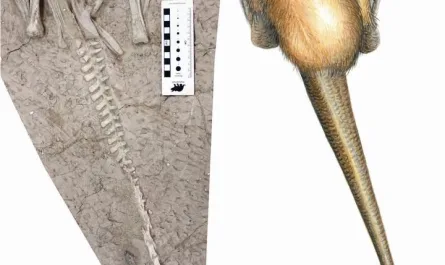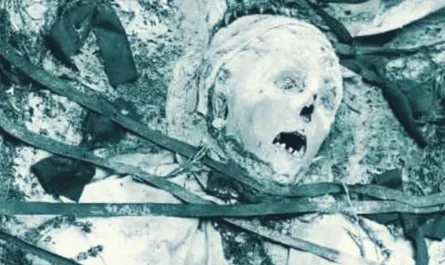The Genetic Disc of Colombia: A Prehistoric Enigma
In the rugged highlands of Colombia, a perplexing artifact known as the Genetic Disc has baffled archaeologists and scholars, challenging our understanding of ancient civilizations. Discovered near Bogotá, this 22-centimeter, 2-kilogram black stone disc, reportedly made of lydite—a hard, multilayered material akin to granite—bears intricate engravings that appear to depict human fetal development and genetic processes. Estimated to be around 6,000 years old and tentatively linked to the Muisca culture, the disc raises profound questions about the scientific knowledge of prehistoric peoples.
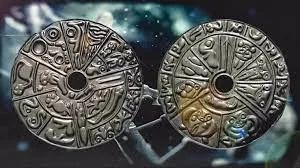
A Mysterious Find
The Genetic Disc was reportedly unearthed in 1964 by Jaime Gutierrez-Lega, a Colombian industrial designer, in the Sutatausa region of Cundinamarca. Its origins, however, remain murky, with no detailed excavation records to confirm its discovery context. The disc’s material, described as lydite, is said to be a rare, brittle stone, possibly of marine origin, making it difficult to carve with ancient tools. Some sources claim the engravings were not carved but stamped, adding to the artifact’s mystery, as such techniques would have required advanced craftsmanship unavailable 6,000 years ago.
Enigmatic Engravings
Both sides of the disc are adorned with detailed carvings that appear to illustrate biological processes. One side reportedly depicts stages of human fetal development, from sperm and ovum to embryo and fetus, with remarkable accuracy. The other side includes images interpreted as cell division and possibly the development of an amphibian or unknown creature, alongside symbols of human reproductive organs. Most astonishingly, some sources suggest these microscopic details—such as spermatozoa—could only be seen under a microscope, a technology absent in prehistoric times.
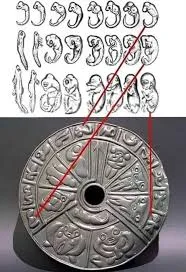
These engravings have led some to speculate that the disc encodes advanced genetic or biological knowledge, far beyond the capabilities of the Muisca, a Chibchan-speaking civilization known for their goldwork and agricultural prowess between 600 BCE and 1600 CE. The Muisca, while sophisticated, left no evidence of such scientific understanding, and their art, like the famous Muisca Raft, typically focused on symbolic and ritualistic themes rather than biological precision.
A Questionable Attribution
The disc’s attribution to the Muisca culture, flourishing in Colombia’s Altiplano Cundiboyacense, is contentious. Scholars note that Muisca artifacts, such as tunjos (gold votive offerings), feature stylized, symbolic designs, not the detailed biological imagery seen on the disc. Furthermore, dating the disc to 6,000 years ago—well before the Muisca period (circa 1000 BCE–1537 CE)—is problematic. Stone artifacts are notoriously difficult to date without organic material or contextual clues, and claims of a 6,000-year-old origin rely on unverified methods, possibly conflating the age of the stone itself with the artifact’s creation.
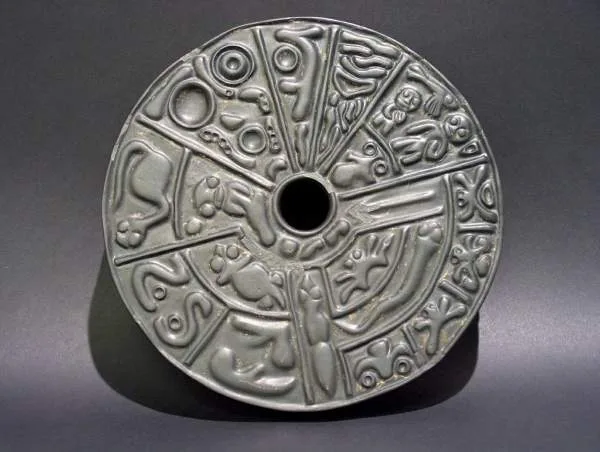
Dr. Vera M.F. Hammer, an expert in minerals, is often cited as having analyzed the disc, but no peer-reviewed studies or museum records corroborate her findings. The disc’s association with the Museum of Natural Sciences in Vienna appears unfounded, and some sources suggest the artifact may be a modern fabrication, possibly created to intrigue or deceive collectors.
A Hoax or a Historical Paradox?
The Genetic Disc’s authenticity remains under scrutiny. Its lack of a clear provenance, absence of similar artifacts in the Muisca archaeological record, and the implausibility of prehistoric microscopic knowledge fuel skepticism. Some propose it could be an “out-of-place artifact” (OOPArt), with fringe theories suggesting extraterrestrial influence or a lost advanced civilization. However, mainstream archaeologists argue that without verifiable excavation data or stylistic parallels to known Muisca art, the disc is likely a modern creation, possibly inspired by 20th-century fascination with ancient mysteries, as popularized by figures like Erich von Däniken.
Despite these doubts, the disc captivates imaginations, drawing comparisons to the “tree of life” motifs found in ancient cultures. Its detailed imagery, if genuine, would imply an extraordinary understanding of biology, challenging conventional timelines of scientific discovery. For now, the Genetic Disc remains a puzzle—either a testament to an unknown chapter of human ingenuity or a clever fabrication that continues to intrigue.
A Lasting Mystery
Housed in private collections or, as some claim, studied briefly in Vienna, the Genetic Disc’s true origins and purpose elude us. Whether a genuine relic of an advanced prehistoric culture or a modern myth, it underscores the allure of the unknown in archaeology. As scholars continue to explore Colombia’s rich pre-Columbian heritage, the disc serves as a provocative reminder of how much remains undiscovered about the past—and how easily the line between fact and fiction can blur.


